
NANCY ROMANCE
An integrated instructional model for accelerating student achievement in sci...
NSF Awards: 1316433
The focus of the video is to document how our current NSF DR K12 project is designed to advance STEM education by providing ‘all’ students (grades 1-2) with a quality, interdisciplinary science and literacy program and demonstrating empirically student achievement outcomes on norm-referenced tests in science and reading comprehension. The video features the Science IDEAS Model and how its implementation in the classroom can provide the means by which educators can address a number of persistent educational problems in elementary science instruction. Specifically, the video segments will illustrate how the project (a) addressed a curriculum focus on standards and practices, (b) how to apply a theory of learning (Bransford, et al., 2000) to the design of instruction to support student conceptual understanding in science, © how an interdisciplinary approach to instruction which links science investigations/inquiry with reading, writing/journaling and propositional concept maps supports in-depth science learning and key literacy outcomes (e.g., reading comprehension, writing, reasoning from evidence), and (d) how the combination of the Science IDEAS curriculum focus on core science concepts along with the 6 instructional elements increased learning outcomes in science and literacy, was feasible for teachers to implement in authentic and diverse classrooms, and provided more time for science instruction. In effect, the Science IDEAS instructional model, by design, and each of the project outcomes have been shown to address ‘modifiable’ factors that, in the past, have been seen as reasons as to why gaps in science achievement have persisted across time.
An integrated instructional model for accelerating student achievement in sci...
NSF Awards: 1316433
The focus of the video is to document how our current NSF DR K12 project is designed to advance STEM education by providing ‘all’ students (grades 1-2) with a quality, interdisciplinary science and literacy program and demonstrating empirically student achievement outcomes on norm-referenced tests in science and reading comprehension. The video features the Science IDEAS Model and how its implementation in the classroom can provide the means by which educators can address a number of persistent educational problems in elementary science instruction. Specifically, the video segments will illustrate how the project (a) addressed a curriculum focus on standards and practices, (b) how to apply a theory of learning (Bransford, et al., 2000) to the design of instruction to support student conceptual understanding in science, © how an interdisciplinary approach to instruction which links science investigations/inquiry with reading, writing/journaling and propositional concept maps supports in-depth science learning and key literacy outcomes (e.g., reading comprehension, writing, reasoning from evidence), and (d) how the combination of the Science IDEAS curriculum focus on core science concepts along with the 6 instructional elements increased learning outcomes in science and literacy, was feasible for teachers to implement in authentic and diverse classrooms, and provided more time for science instruction. In effect, the Science IDEAS instructional model, by design, and each of the project outcomes have been shown to address ‘modifiable’ factors that, in the past, have been seen as reasons as to why gaps in science achievement have persisted across time.
-
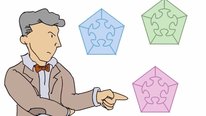 What is Effective Science Curriculum?
What is Effective Science Curriculum?
Jacqueline Miller
-
 Instructional Leadership for Science Practices
Instructional Leadership for Science Practices
Katherine McNeill
-
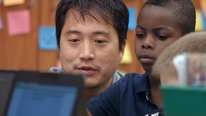 Learning Trajectories for Everyday Computing (LTEC)
Learning Trajectories for Everyday Computing (LTEC)
Andy Isaacs
-
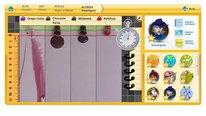 Science4Us: Developing K-2 STEM Skills
Science4Us: Developing K-2 STEM Skills
Jenna Mercury
-
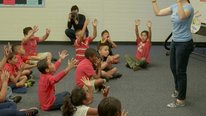 ESCAPE through Art and Science
ESCAPE through Art and Science
Brad Hughes
-
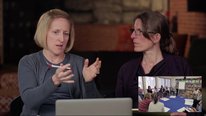 Educative Video and Curriculum Storylines Supporting Access
Educative Video and Curriculum Storylines Supporting Access
Jean Moon
6300 Views
Continue the discussion of this presentation on the Multiplex. Go to Multiplex
6300 Views
Related videos you might be interested in...
-
 What is Effective Science Curriculum?
What is Effective Science Curriculum?
Jacqueline Miller
-
 Instructional Leadership for Science Practices
Instructional Leadership for Science Practices
Katherine McNeill
-
 Learning Trajectories for Everyday Computing (LTEC)
Learning Trajectories for Everyday Computing (LTEC)
Andy Isaacs
-
 Science4Us: Developing K-2 STEM Skills
Science4Us: Developing K-2 STEM Skills
Jenna Mercury
-
 ESCAPE through Art and Science
ESCAPE through Art and Science
Brad Hughes
-
 Educative Video and Curriculum Storylines Supporting Access
Educative Video and Curriculum Storylines Supporting Access
Jean Moon









Brian Drayton
Very interesting video and program!
I have two questions.
First, you tell about gains in student achievement as measured by norm-referenced tests. Do you have such tests that you feel are adequate measures of students’ understanding of the practices? Are you using comparable data in seeing the transfer to 5th-6th grades where both the content and the practices are somewhat more sophisticated?
Second: How have you teased out the respective impact of curricular/pedagogical elements of the program, as opposed to the “mere” increase of time spent on science (every science teacher’s dream :) ?
Jorge Solis
Assistant professor
Thank you for sharing information on your project! I was wondering if you could also share some ways you have adapted the IDEAS model to address particular grade level science and literacy skills in the lower grades (1-2nd grade) from upper elementary grades.
Nancy Romance
Professor
Hi! Thanks for your question. Primary Science IDEAS is a grade-level adaptation of the original Science IDEAS project for grades 3-5. Modifications were made in terms of aligning the science concepts to the District’s scope and sequence as well as aligning to some of the general themes of the Framework and NGSS. Our model for reading specifically addresses a reading comprehension routine and does not emphasize many of the popular but often weak skills (text features) which do little to link new concepts with students’ prior knowledge and relevant experiences.We have a good number of published articles describing the model. The main aspect of adaptation was the suitability and grade-appropriateness of the concepts and concept sequences to be taught.
Jorge Solis
Assistant professor
Thanks Nancy! I’m very interested in reading more about your work. I’ve done some work incorporating prior experiences students have in the classroom and have noticed that these are truly varied involving both home/community experiences and interactions with the natural worlds /environmental/local ecology. Can you share a few ways that teachers are encouraged to link new concepts with students’ existing, relevant experiences?
Marcelo Worsley
Assistant Professor
The professional development piece seems to be an important part of this work. Can you say more about the PD experience that teachers have (how they are recruited, what they do during the PD, and how they are supported/evaluated throughout the year)?
Nancy Romance
Professor
Hi! Thanks for your question. The PD involves a series of activities across the 3 years. The project started late in October, so we missed the first summer PD. We began in November of 2013. During the school year we offered 4 full days of PD. During Summer we offered 5 full days; Summer II, we offered 4 full days. I along with my Project Coordinator, several former NSF Science IDEAS teacher-presenters and current teachers planned together and delivered PD. The second summer (2015)PD was delivered by teams of current project teachers who had exemplary classroom implementation of the Science IDEAS instructional model. They received training from us and planned with us prior to delivery. The results were amazing. Our focus areas included: developing teacher conceptual understanding in science (core concepts and the practices of science), understanding the role of knowledge in meaningful learning (e.g., developing/using concept maps), and integrating reading and writing to support science learning. We have many published articles on Science IDEAS. If you check our website for the former grades 3-5 Science IDEAS project, you will find many of the research articles. We are just now going to add Primary Science IDEAS to the website. Thanks, Nancy
Michel DeGraff
Professor
Hello, knock knock! Anyone there?
Nancy Romance
Professor
Yes. I’m here!!!
Michel DeGraff
Professor
Very much looking forward to your answers and to the conversation. Great video! I love this early linking between STEM and literacy. Just this morning I was in a very interesting conversation with an instructional coach at one of the Cambridge Public Schools, and this topic came up. I’ve been fascinated by this “marriage” between STEM and literacy (and other non-STEM areas) because of my own work as a linguist as part of a team of education specialists and STEM experts promoting Kreyòl-based STEM education in Haiti—a country where literacy usually happens in French that is spoken by only … 5% (!) of the population. You can easily imagine what kind of barrier this mis-use of language constitutes for the majority of the population—-the Kreyòl-only speakers. Thus my deep personal interest in your work that also combines STEM with literacy. Going outside of my own interests, I’d love to hear your thoughts on the other questions raised above.
Nancy Romance
Professor
Hi! Bryan: Thanks for your questions. We have consistentlt used the ITBS for assessing science learning and reading comprehension. We use it acrss grade levels and for the controls. However, the more in-depth answer to your questions would take more time typing that talking with you. So, he’s some ideas: I would be happy to email you several recent publications that describe in detail the project and its assessment. Also, please feel free to stop by our poster at the PI meeting or call: 561-297-3577.
Michel DeGraff
Professor
Looking again at the video, I noticed how articulate the little girls were who expressed their love for science and hands-on experiments. Then I realize that your university is in Boca Raton South Florida which does have a diverse population—linguistically and otherwise. So I was curious how you would link the STEM activities with literacy for students from different language backgrounds. This is, of course, especially relevant to my own interests in introducing active learning of STEM to Kreyòl-speaking students in Haiti where literacy is typically taught in French, leading to disastrous results, both in STEM and in literacy!
Nancy Romance
Professor
Hi! Michel: Great question. The best thing about integrating science and literacy is that the children love every minute spent learning, exploring, writing about and even reading about what they are learning. The main outcome is strong achievement in science and reading and writing. Some of our schools were 90% Free Lunch and about 88% diverse. It didn’t matter. Science is a great equalizer. It is the best way to develop literacy (speaking, comprehension and writing) because the topic is ‘real’.
Where are you located???
Michel DeGraff
Professor
Hello Nancy, I’m at MIT in Boston. Can you please tell us about the language background of your students, and whether/how their home language (if different from English) was used in your science-and-literacy programs? Please, please. Thank you!
Nancy Romance
Professor
There is one participating school that has a dual-language program. In this school the students are taught Science in Spanish and Reading in English. These students have done very well. The teachers who teach in Spanish have seen a marked improvement in these students reading and writing skills. In many of the schools there are English Language learners from South America and Haiti.
Further posting is closed as the showcase has ended.